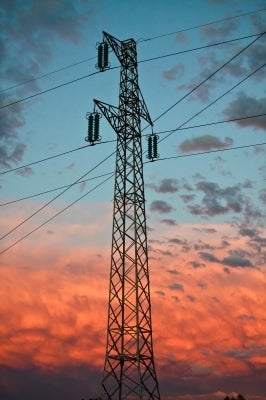Electric grid operators adjust to changing markets
 IMAGE CREDIT/FREEDIGITALPHOTOS.NET
IMAGE CREDIT/FREEDIGITALPHOTOS.NET
From a closely guarded control room in Holyoke, analysts forecast the region's electrical usage, directing power plants to fire up or wind down as they strive to maintain a constant level of electricity along New England's 8,500 miles of high voltage power lines.
The future holds new challenges for ISO New England, which oversees the electrical grid from Maine to Connecticut. The annual forward capacity market that will be held in February, looking at power generation capability for the 2017-2018 season, will for the first time include a deficit.
"There's always a risk that what comes in isn't sufficient to cover what's leaving, but we hope that through the market process you do get that interest in development, and we hope that those resources do get developed and built," said ISO New England Vice President of External Affairs Anne George. In a pinch, ISO can bring in temporary power plants to fill gaps in capacity, George said.
ISO New England is holding a meeting Thursday in Boston to look at the future of electricity production, with a final 2014 regional plan expected to be issued by November.
Riding a wave of low prices, natural gas has crowded out nuclear, oil and coal power plants, though major demands from residents on the natural gas supply during the cold months cause electricity prices to spike. Meanwhile older plants that can't match the usually cheap costs borne by natural gas and don't have the political backing experienced by wind and Canadian hydroelectric power, are being decommissioned.
Vermont Yankee Station, a nuclear plant, plans to close by the end of the year; Brayton Point, a coal and oil plant in Somerset plans to close in about three years, as does Norwalk Harbor Station, an oil plant in Connecticut. Salem Harbor Station, which burned coal and oil, closed this year, and there are plans to replace it with a natural gas plant. In total, 3,393 megawatts of power generation plan to decommission over the next five years, representing more than 10 percent of New England's roughly 31,000 megawatts of generating capacity. The grid estimates still more power plants are at risk of shutting down.
More wind projects are under development, potentially creating a green source of power whose production is dependent on the weather. Additional wind projects will require upgrades to the system of high-voltage power lines because areas of wind generation - off the coast of Cape Cod and in the northern stretches of Maine and New Hampshire - are far from the centers of demand in Boston and Hartford, Conn., according to ISO New England spokesperson Lacey Girard.
Future instability caused by potential natural gas shortages and variable wind patterns would need to be managed so as not to disrupt the careful balance of electricity generation and demand for power. Too much generation or not enough could cause "destabilization," according to George, which could result in outages.
This delicate balance is maintained 24 hours a day at the organization's facility in Holyoke, where the bulk of the 560 employees work. There is a backup control room in Windsor, Conn.
The New England grid has two hydroelectric generators that are used during peak demand periods and whose operations can be directed during fraught circumstances. The reservoirs at Bear Swamp and Northfield Mountain pump water into their reservoirs when electricity is cheap and let it drain through the dam to produce power when power is expensive.
The grid operates a daily commodity market for power where the price of fuel basically sets the clearing price as well as the annual Forward Capacity Market where generators are paid to be on standby to operate if required.
In recent winters utilities providing natural gas for home heating have left little if any gas for electricity generation, according to Girard, meaning the natural gas plants that committed to be on standby were unable to fire up.
ISO New England has new measures that require committed plants to procure electricity from another source if they find themselves without the means to do so, but those will only take effect in the yearly cycle that begins June 1, 2018. The high demand for natural gas has caused the price of natural gas to actually rise above the cost of oil during the winter, according to Foley.
Last winter ISO New England embarked on a $65 million project to encourage plants to have enough oil in reserve. Major storms can knock out transmission lines, making it difficult for plants to operate, and cold weather causes oil to burn more quickly, ISO officials said. ISO plans to hold a similar program this winter.
ISO New England predicts a deficit of 143 megawatts for the forward capacity market where power plants commit to be able to run in the 2017-2018 year.









0 Comments